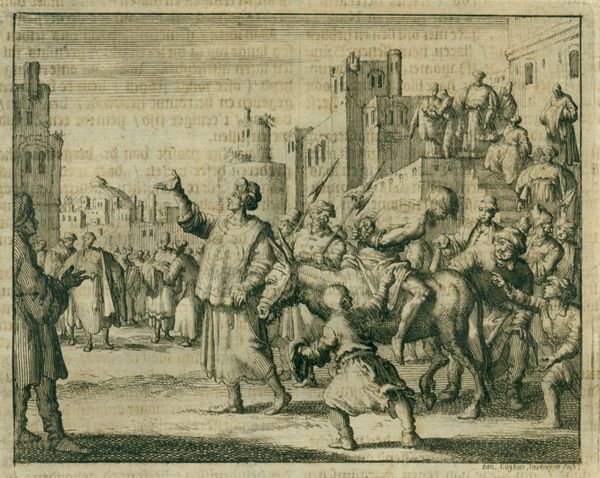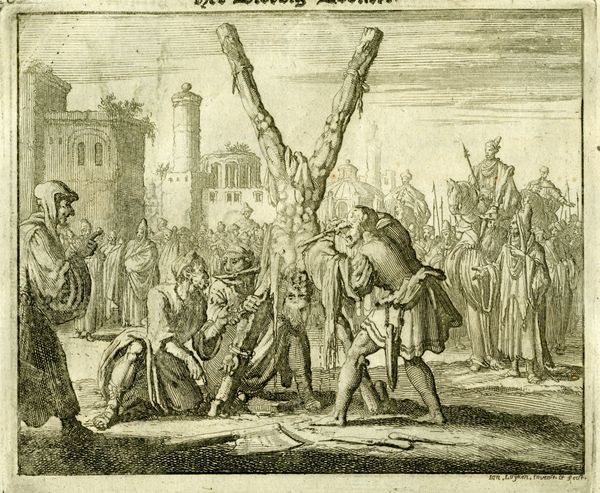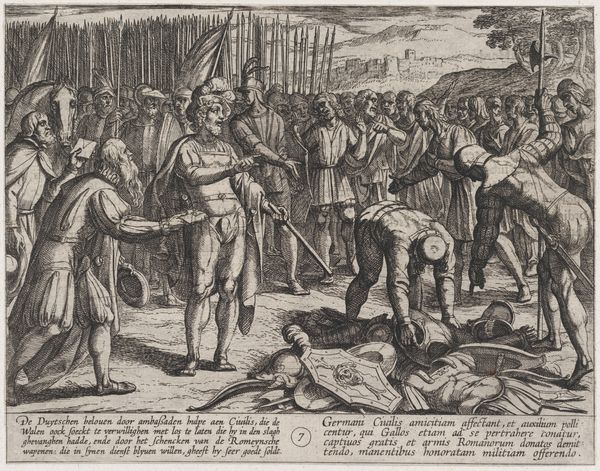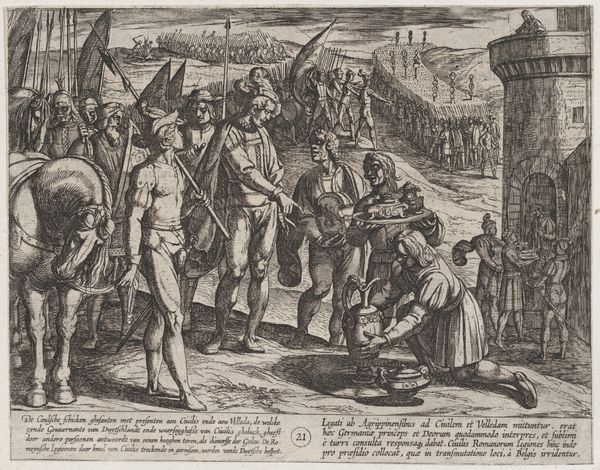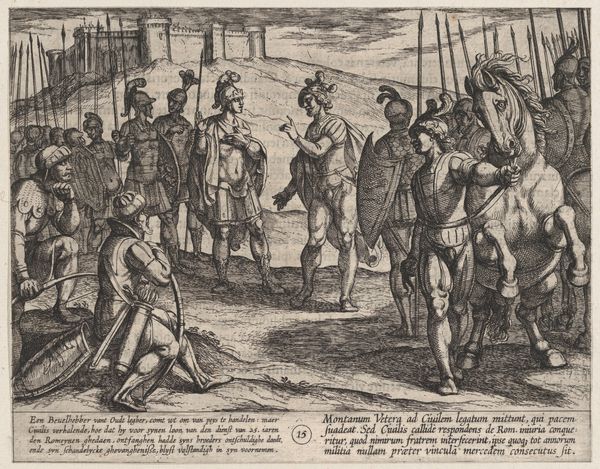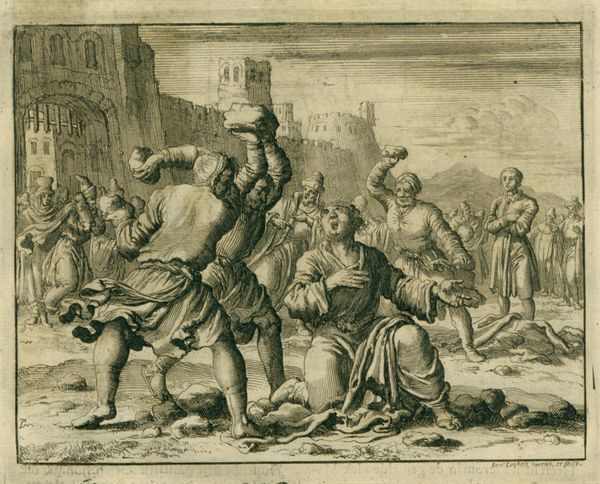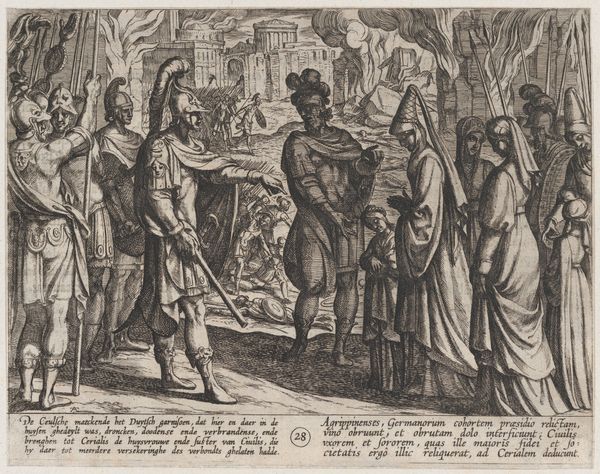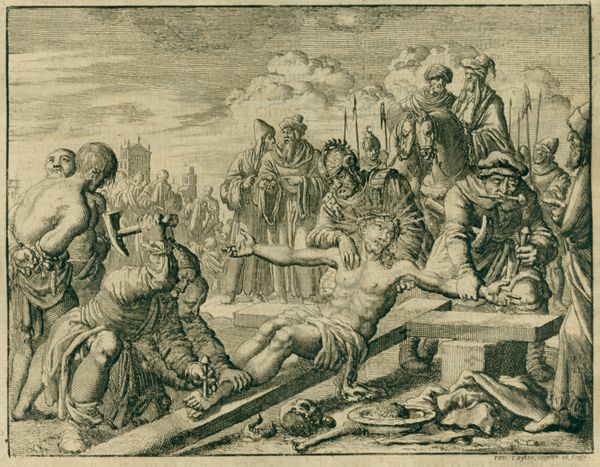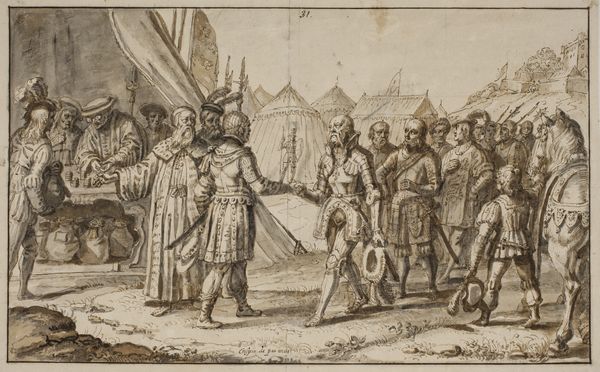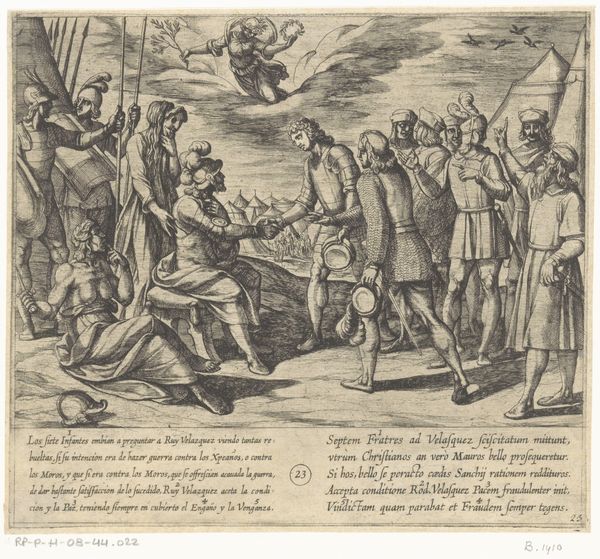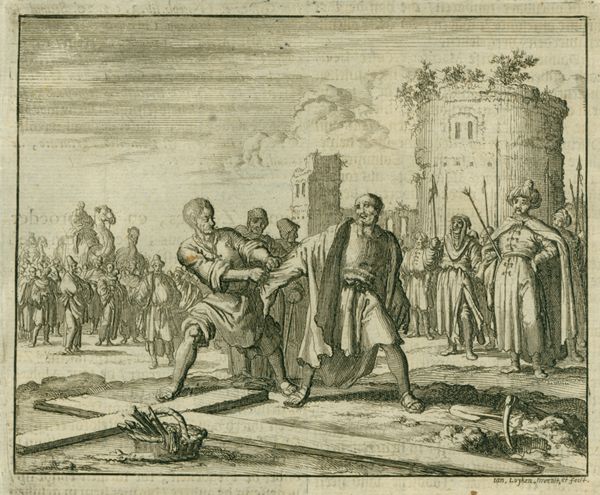
print, engraving
#
narrative-art
#
baroque
# print
#
history-painting
#
engraving
Copyright: Public domain
Editor: This engraving, "Burning of William White, a Priest, Norwich, England, AD 1428" created in 1684 by Jan Luyken, it is quite stark. I’m immediately struck by the composition: the somber expressions and the dark lines contrasting against the bare space. What details jump out to you? Curator: The formal elements are indeed compelling. Notice how Luyken uses line to create depth and to differentiate textures. The foreground figures, sharply delineated, stand in contrast to the more loosely defined background. Consider also the balance – the deliberate placement of the stake on the right against the group of figures on the left. Does that strike you as a powerful arrangement, visually speaking? Editor: Absolutely, it feels very intentional, like opposing forces almost, or points of view, visually. But why choose this particular arrangement? What does it tell us, in itself? Curator: Think about what each area holds, the details the artist etches into each figure, the specific woodcuts that frame the composition as a whole. What narrative power comes solely from that? How do these aesthetic choices inform the emotional tone? Editor: Now that you mention it, there is an asymmetry suggesting some tension between the authority figures on the left, and this… impending dread suggested by the stake and figure on the right, each defined through line and detail… Curator: Precisely. And from this focused rendering and formal rendering, meaning becomes constructed. What initially strikes the eye beyond, say, a story? Editor: I see now that Luyken used formal tension to elevate an ordinary picture into something more visually and symbolically significant. Curator: Precisely. Studying the work reveals new layers. Editor: Definitely something I will look out for from now on.
Comments
No comments
Be the first to comment and join the conversation on the ultimate creative platform.
